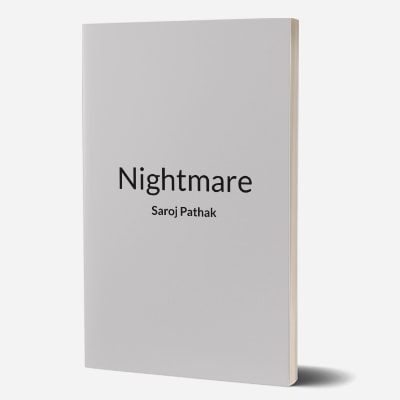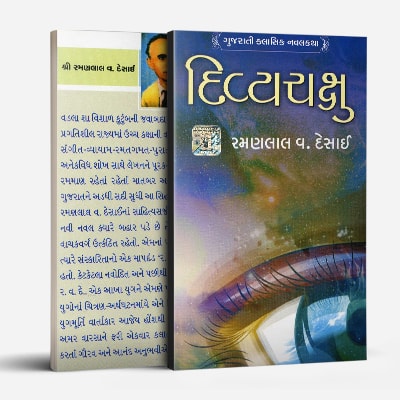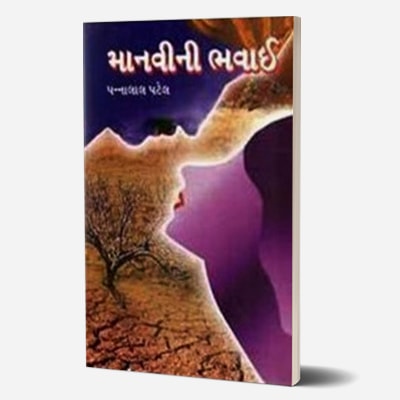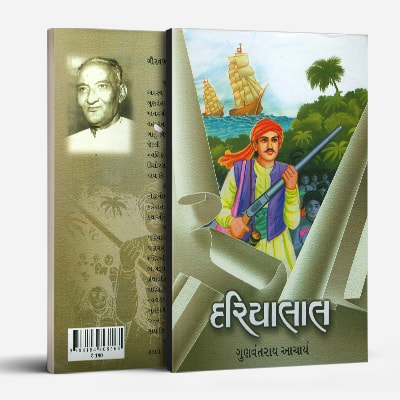Nightmare
By Saroj Pathak
In this aptly named novel, Pathak explores the torturous existence of a woman forced to marry the elder brother of the lover she was to marry. Exploring the lives of the three characters – the husband, the lover, and the wife – now living under the same roof, Nightmare (1969) is an attempt to understand the complexities of the human psyche.
Nightmare is a must-read for Pathak’s psychoanalytic approach and tactful use of the soliloquy.
About the Author
Saroj Pathak (1929-1989) worked for the All India Radio, Soviet Embassy, and taught at the Bardoli College. Pathak is known for her explorations of the mind in her writings. Her short-story collection Prem Ghata Zuk Aai (1959) won her a prize from the Government of Bombay. Pathak also wrote essays for the Nari Sansar column in Gujarat Mitra.
Divyachakshu
By RV Desai
Ramanlal Vasanthlal Desai’s novel Divyachakshu (1932) is a fascinating story chronicling the role of freedom fighters in India. Based on a love triangle between the protagonist Arun and the characters Pushpani and Ranjan, Desai skilfully intertwines the non-violence resistance, role of British officers, secularism, female empowerment, and untouchability in his narrative. The novel ends with Arun, despite being blinded while saving an English family from a fire, receiving divine vision (divyachakshu) in the form of the devotion of his wife and his non-violence principles. Inspired by Gandhian philosophy, Desai vividly depicts and glorifies the role of ahimsa in this novel.
A modern audience can find themselves enriched by Desai’s engagement with ahimsa and Gandhian principles. The novel presents its readers with the opportunity to acquaint themselves with our complex socio-cultural history.
About the Author
Ramanlal Vasanthlal Desai (1892- 1954) was a popular Gujarati author. His publications consist of novels, dramas, poetry, and autobiographical work. His greatest works are considered to be Divyachakshu (1932) and the four-volume novel Gramlakshmi (1933-1937), which depicted the freedom struggle. Desai was deeply influenced by and centred most of his works on Gandhian philosophy. It has been said that both ordinary readers and literary critics used to wait in anticipation for his work; many readers even named their children after characters from his books. He worked as a senior government official.
Manvini Bhavai
By Pannalal Patel
Translated by V.Y. Kantak
Just the thought of suffering and surviving a famine makes one shudder. Pannalal Patel’s novel Manvini Bhavai (1947), literally meaning ‘Man’s Drama’, presents to us an emotional story on the realities of a famine. Based on the ‘Chhapaniyo Dukal’ famine of the early 1900s, this novel chronicles the struggle of sustenance faced by Indian villagers against the backdrop of a love story. A depiction of the trials and tribulations of farmer Kalu and his lover Raju, Manvini Bhavai
In today’s day and age, this novel gives its readers the opportunity to learn about the unpleasant aspects of our history and to understand the role of the colonial situation as it relates to our cultural identity.
V.Y. Kantak translated the novel to English – ‘Endurance: A Droll Saga’ – and was published by Sahitya Akademi.
About the Author
Pannalal Patel (1912-1989) is said to be one of the foremost Gujarati writers. Despite being unable to complete formal schooling, Patel has a bibliography spanning 54 novels and 26 short story collections. Two of his most popular works are the novels Manvini Bhavai (1947) and Malela Jiv (1941). Patel has been recognised for his ability to produce complex reflections of society and humanity. His works have dealt with love, gender norms, religion, oppression of the native, and social hierarchies.




